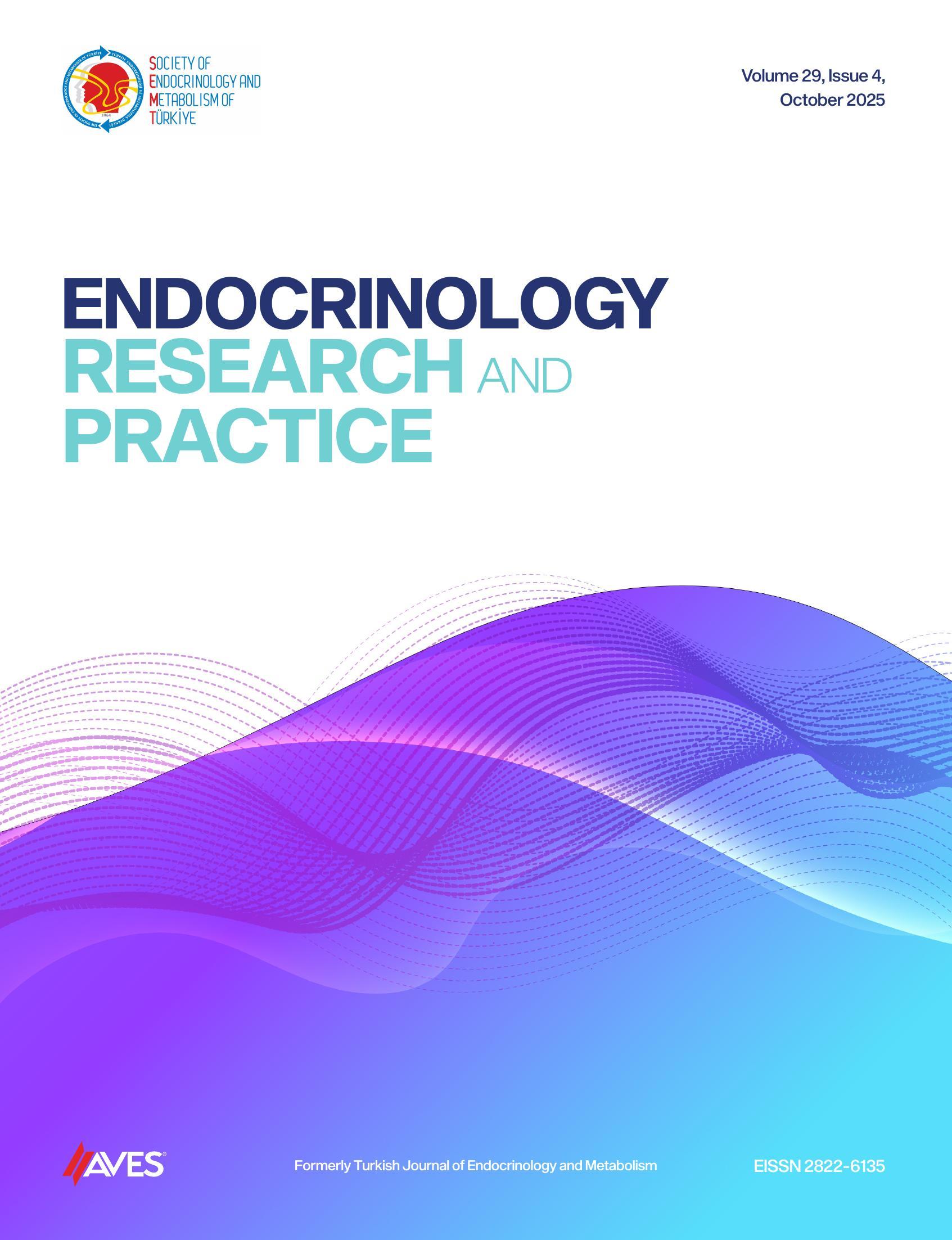Objective: The current study aimed to investigate the prevalence of metabolic syndrome (MetS) among Turkish adults with prediabetes compared to normoglycemic individuals and to examine the distribution and characteristics of MetS across prediabetes subgroups defined by glucose tolerance.
Methods: In this cross-sectional study, 286 adults newly diagnosed with prediabetes and 140 age- and sex-matched normoglycemic controls were enrolled. The MetS was diagnosed using the definition of the International Diabetes Federation with Turkish-specific waist circumference (WC) thresholds. Patients were categorized into 4 subgroups: isolated impaired fasting glucose (iIFG), isolated impaired glucose tolerance (iIGT), combined IFG + IGT, and a high-risk group (HRG) with elevated glycated hemoglobin (HbA1c) but normal glucose values.
Results: The MetS was more common in the group with prediabetes (55.9%) than in controls (15.7%) (P < .001). Among prediabetes subgroups, MetS was most common in individuals with combined IFG + IGT (69.4%), followed by iIFG (64.6%), iIGT (32.1%), and HRG (21.3%). Combined IFG + IGT was associated with a 2.4-fold increased risk of MetS (adjusted OR: 2.44; 95% CI: 1.39-4.27, P=.002). Patients with MetS had significantly higher body mass index (BMI), WC, HbA1c, triglycerides, alanine aminotransferase (ALT), and lower high-density lipoprotein cholesterol (all P < .010). Multivariate analysis identified age, elevated BMI, and ALT levels as independent determinants of MetS. A BMI cut-off value of 30.3 kg/m2 determined MetS in prediabetes with 74% sensitivity and 60% specificity (area under the curve: 0.68; 95% CI: 0.62-0.75; P < .001).
Conclusion: The MetS is highly prevalent among Turkish adults with prediabetes, particularly in those with combined IFG and IGT. Individuals with coexisting prediabetes and MetS display a more adverse metabolic profile, highlighting the need for early identification and targeted interventions.
Cite this article as: Bostan H, Hepşen S, Gül Ü, Akhanlı P, Çakal E. Metabolic syndrome in turkish adult patients with prediabetes: A subgroup analysis by glucose tolerance status. Endocrinol Res Pract. 2025;29(4):286-293.

-1(1).png)

.png)